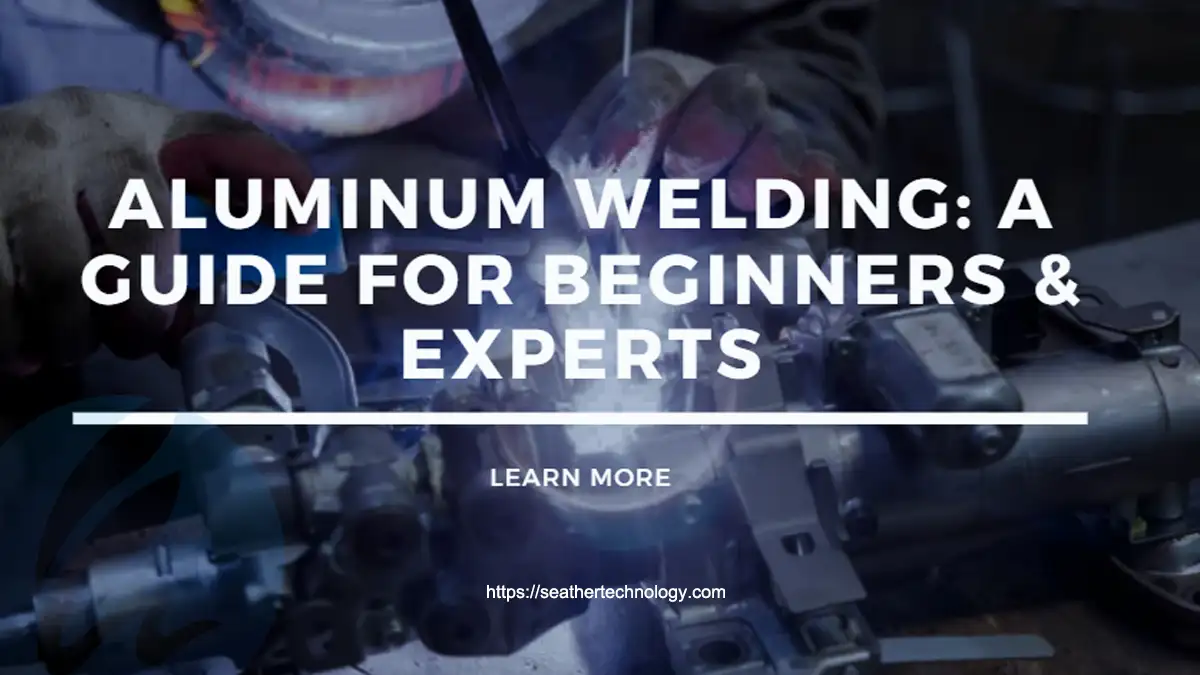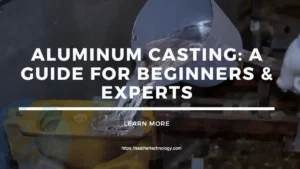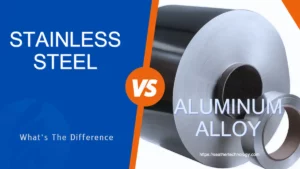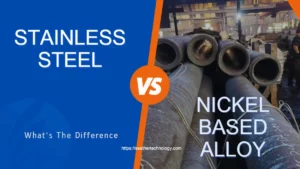The welding of the aluminum is an easy task for the beginners and experts.
Beginners face some challenges because the welding of Aluminum requires specific techniques and processes.
Joining two or more components of aluminum and aluminum alloys with heat, pressure, and filler metal is called aluminum welding.
Aluminum and its alloys are most commonly used in aviation, marine, automotive, and sheet metal applications.
Weldability, like any other metal with such applications, is a critical quality for its broad applicability.
Aluminum welding is a difficult skill that takes knowledge and effort to become an expert. This article is helpful for all beginners and experts.
Aluminum is a more versatile and most commonly used material due to excellent corrosion resistance, strength, formability, and thermal conductivity.
Aluminum, with a low density of about 2.71 g/cm3, is the most widely available metal and the third-most common element on Earth, after oxygen and silicon.
Because pure aluminum is generally soft, modest small quantities of alloying elements are used to create a variety of mechanical characteristics.
The alloys are classified according to their main alloying elements.
Specific commercial alloys are designated with four digits based on international requirements.
The first of these four digits indicates the main alloying element used in the alloy.
The second digit indicates the modifications in the specific alloy, such as x1xx, which shows the first modification, and x2xx, which shows the second modification. The last two digits show the specific type of the alloy. For example, in the 7075 alloy, 7 indicates the main alloying element, zinc, 0 means no modifications, and 75 indicates a specific type of alloy.
Main Elements in Aluminum (Learn How the Elements Influence Aluminum Welding)
Pure aluminum is a soft metal and is not commonly used in industry. It makes alloys with different elements for desired properties.
The main alloying elements for aluminum alloys are copper, zinc, magnesium, manganese, and silicon.
Copper
Copper is a commonly used alloying element in aluminum alloys. It impacts the material’s strength and hardness. However, the addition of copper can make the weld metal more susceptible to fracture.
Zinc
The zinc significantly improves strength and allows precipitation hardening. A high zinc percentage in the base metal may result in decreased weld quality and enhanced cracking susceptibility.
Magnesium
Magnesium is frequently added to aluminum alloys to improve strength and corrosion resistance. However, the presence of magnesium may make the weld metal more prone to fracture during solidification.
Common Challenges in Aluminum Welding
Welding Aluminum is not as easy as iron or steel. You will have to face some challenges during the welding of Aluminum and its alloys. Some common challenges are given below:
Thermal conductivity
Aluminum conducts heat really efficiently, so when we weld it, the cold parts of the metal surrounding it strive to absorb the heat from the welding location. This reduces the weld’s ability to penetrate deeply. To solve this, we can apply greater heat during welding. By raising the heat, we can achieve the temperature required for the weld to penetrate deeper into the metal.
Aluminum oxide layer
The thin outer layer of oxide on Aluminum frequently appears due to its corrosion resistance. Welding is challenging due to its greater melting temperature of around 1400°C compared to the ordinary aluminum alloy (which melts at ~660°C). The joint strength and welding quality are inconsistent due to this temperature difference.
Porosity
The existence of gas pockets and spaces on a metal or welding surface is known as porosity. Porosity is a serious issue when welding Aluminum because hydrogen is easily dissolved in liquid Aluminum. During welding, both Aluminum and the filler metal will become liquids, absorbing hydrogen. A solution containing hydrogen can produce bubbles and cause porosity as the metal solidifies.
Impurities
Aluminum is extremely sensitive to contaminants while it is melting. It can become polluted by dirt, air, and water during welding. Impurities might result in weak welds.
Preparations before Aluminum Welding Process
Cleaning is the most important factor in the preparation of the aluminum welding process. Cleaning the base metal and filler metal or rod is essential before starting the welding process.
Removing the impurities
Ensure that the surface of the aluminum workpiece to be welded is totally free from impurities like dust, oil, water, and corrosion for a good welding joint.
Why is it so important to clean Aluminum before welding?
One of the most difficult aspects of welding aluminum is oxidation. When the base metal and filler rod are not sufficiently cleaned before welding, three times more heat is needed to penetrate through the surface oxidation layer.
Common Techniques when Welding Aluminum to Aluminum
Some common techniques for aluminum welding are given below in detail.
MIG Welding Aluminum
Gas Metal Arc Welding (GMAW), often known as “MIG” welding, has been suggested to be the quickest way to weld Aluminum. MIG welding is a semi-automated process that uses a spool gun to weld thicker metal. The wire feeds mechanically in GMAW rather than manually in GTAW.
Argon is usually the gas used in MIG welding. You can also buy an argon-helium mixture. Helium enhances the arc and is often preferable for thicker metals.
Flame Welding Aluminum
Flame welding is also known as gas welding for Aluminum. To weld Aluminum and its alloys, a flame is created by a gas mixture that typically includes acetylene and oxygen.
TIG Welding Aluminum
The most popular technique for welding aluminum is Gas Tungsten Arc Welding, sometimes known as “TIG” (tungsten inert gas) welding. TIG uses a gas to shield the welded aluminum portion from contaminants. The primary shielding gas is argon.
TIG welding is especially effective when working with thin-gauge Aluminum. Furthermore, it is mechanically powerful and visually attractive. For these reasons, it is a very popular technique used in the automotive industry. Most professional welders in the automotive industry favor TIG welding.
Oxy-acetylene Welding Aluminum
Oxy-acetylene welding, also known as gas welding, is a method based on the combustion of oxygen and acetylene. Oxy-acetylene welding has a low thermal efficiency, the welding heat input is not organized, and flux is necessary when welding aluminum alloys. This technique is mostly utilized for small parts and thin plates of aluminum alloys.
Electron Beam Aluminum Welding
Electron beam welding is a very precise and effective method for welding aluminum. It sends an intense stream of high-velocity electrons through the joint contact, forming a high-temperature local zone to complete the weld. It is carried out in a vacuum chamber and is best suited for 6000 series aluminum alloys.
The speed of electron beam welding may reach up to 100 inches per minute, which is ten times faster than TIG and MIG welding.
Safety Equipment in Aluminum Welding
Safety measures
Safety first! Wear a PPE kit while welding to protect your safety. These include safety goggles, gloves, welding helmets, and protective footwear. This applies to both skilled and beginners.
Proper cleaning
Aluminum is a sensitive metal; thus, you must be very careful when welding it. Cleaning is critical for the safety of aluminum welding. To clean Aluminum, start by removing surface deposits like oil, droplets, and grease with a solvent like acetone. Next, use a powerful alkaline, mild acid, or steel brush to remove the oxide layer.
Welding Joints in Aluminum Welding
Outside corner joint
The outer edges of the two plates are connected at 90 degrees parallel to one another. It’s regarded as one of the easiest joints. It would be beneficial to hold a longer arc than other joints.
Inside corner joint
The inner edges of the two plates are connected at a 90-degree angle. It usually creates a groove to fill, which allows for effective penetration. It is advantageous to keep a tight arc while welding.
Butt joint
Two parts butted up against one another in butt joints. Only the top and bottom surfaces can be welded. This weld shows a lack of strength due to the lack of penetration.
Lap joint
Lap joint is most commonly used to link two sections of different thicknesses together. Two sheets or plates are layered on top of one another. It is classified as a fillet type, and the weld might be done on one or both sides.
Tee joint
Tee welding junctions are created when two parts intersect at a 90-degree angle. This causes the edges of a plate or component to meet in the center, forming a ‘T shape.’ Tee joints are a type of fillet weld.
Features of Aluminum Welds
High Strength
Aluminum welds are good in strength if the proper welding method and filler metals are used for welding.
Thermal conductivity
Aluminum alloys have good thermal conductivity; therefore, heat is transferred quickly during welding. Proper heat transfer is critical for controlling the weld pool and avoiding problems like distortion and insufficient penetration.
Good Appearance
Aluminum welds are very good in appearance. Aluminum welds have smooth, clean, and visually attractive surfaces with proper weld beads.
Advantages of Aluminum Welding
- An oxide coating is formed on the welded piece when subjected to the open air. This coating will protect the aluminum workpiece from rusting.
- Aluminum welded pieces are easy to cut. Therefore, machining is not difficult for these parts.
- Due to its high thermal conductivity, Aluminum welds faster than other metals like steel. Therefore, aluminum welding is time-saving compared to steel or iron.
Equipment in Aluminum Welding
- For secure aluminum welding, use acetone and a stainless steel brush to clean the base aluminum and filler rod.
- The TIG/MIG welding equipment includes a foot pedal.
- An inverter is not technically required for aluminum welding, making welding machines much more efficient than standard transformers.
- Shielding Gases are required like acetylene.
- Weldable aluminum alloy sheet or plate
- Suitable aluminum filler rod
- An aluminum fixture plate (jig) helps prevent arc markings from protecting working material throughout the weld.
- Heat sinks are also recommended for aluminum welding.
Shielding Gases in Aluminum Welding
The shielding gas for aluminum welding can be either argon or helium. These two gasses can be utilized individually or in combination.
Pure argon is the most preferred because of its excellent cleaning properties and penetration profile.
Argon is the most frequently used shielding gas for welding aluminum. Argon welding makes the treated surface appear shinier than helium welding.
Application of Aluminum Welding
There are many applications of aluminum welding, and mostly used in industries; some applications are given below:
Aluminum welding is mostly employed in the automotive industry by skilled welders.
Aluminum welding processes are widely employed in various industries, including food and pharmaceuticals, automotive, construction, and manufacturing.
Industry sectors include aerospace, medical, energy, and high-tech.
Laser welding for Aluminum is utilized when high welding rates are required.
Conclusion
Aluminum welding is not as difficult as people think.
After reading this guide, you can easily solve the problems during the welding process by using the proper filler metal and aluminum welding method.
If you need aluminum welding expert help, contact our team today.
More Resources:
How to Weld Aluminum – Source: UTI
How to MIG Weld Aluminum – Source: WeldGuru
Welding Aluminum – Source: WeldGuru
MIG Welding Aluminum – Source: Make Money Welding
How to Weld Aluminum – Source: The Instructables
Weld Aluminum Guide – Source TWI






